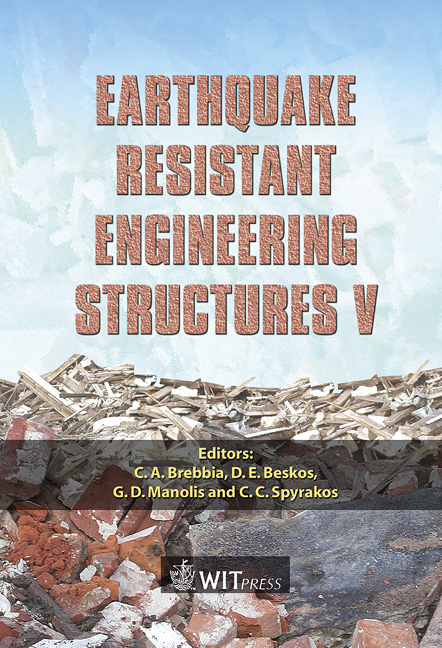Settlements And Pore Pressure Generation In Sand During Earthquakes – Physical Phenomena And Their 1-D Description
Price
Free (open access)
Transaction
Volume
81
Pages
9
Published
2005
Size
528 kb
Paper DOI
10.2495/ERES050021
Copyright
WIT Press
Author(s)
A. Niemunis, T. Wichtmann & Th. Triantafyllidis
Abstract
This paper discusses the pore water pressure generation due to earthquake shaking. Moreover a method of settlement prediction during the reconsolidation phase is presented. The cumulative effects are calculated with an explicit (N-type) constitutive model. Keywords: liquefaction, earthquake, non-linear wave, explicit accumulation model, dissipation. 1 Introduction and notation Even in a simple 1-D case the liquefaction of a sand layer, Fig. 1, due to an earth-quake is a relatively complex phenomenon. The sand layer of the thickness H is harmonically excited in the horizontal direction at the rock bed level (=0). In the horizontal direction the phenomena are homogeneous over a large area. This allows for a 1-D approach. The excitation at the rock bed causes a shear wave that propagates vertically upwards, possibly with a reflection at the top (= H ). The propagation of the shear wave with an energy dissipation D (ampl ,σ ) and with a nonlinear shear modulus G (ampl ,σ ) is not a straightforward problem. Addi-tionally a considerable accumulation of strain ˙ acc and of cyclic relaxation ˙ σ acc appears as a side effect. This is accompanied by the generation of excess pore water pressure and its subsequent dissipation. The phenomena mentioned above are interrelated. For example, the shear stiff-ness G and the damping ratio D depend on the shear strain amplitude γ ampl (which requires a rate type description ˙ τ = G ˙ γ ) and on the mean effective stress p ,which
Keywords
liquefaction, earthquake, non-linear wave, explicit accumulation model, dissipation.





